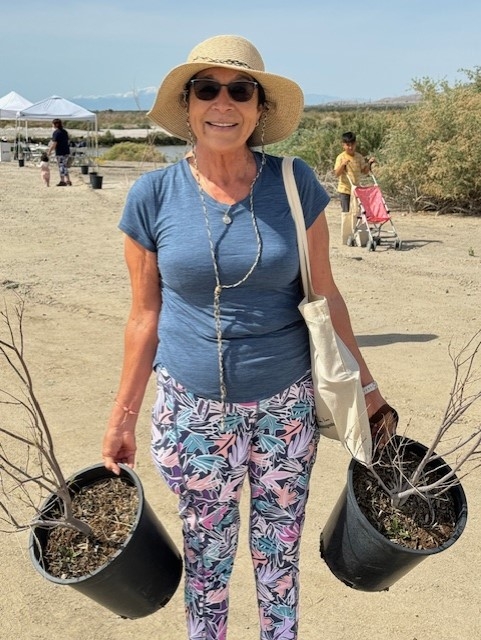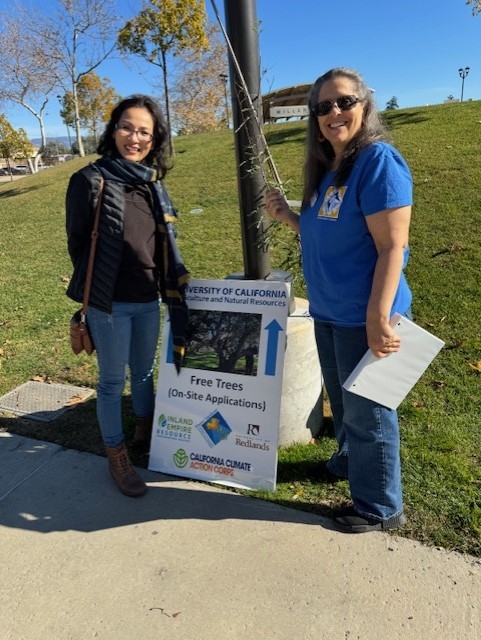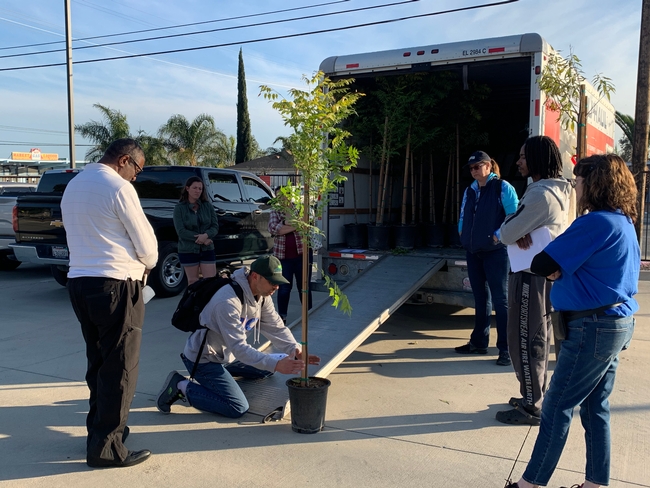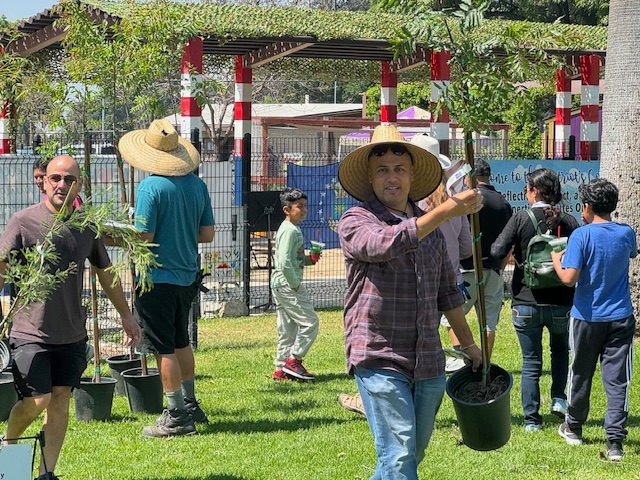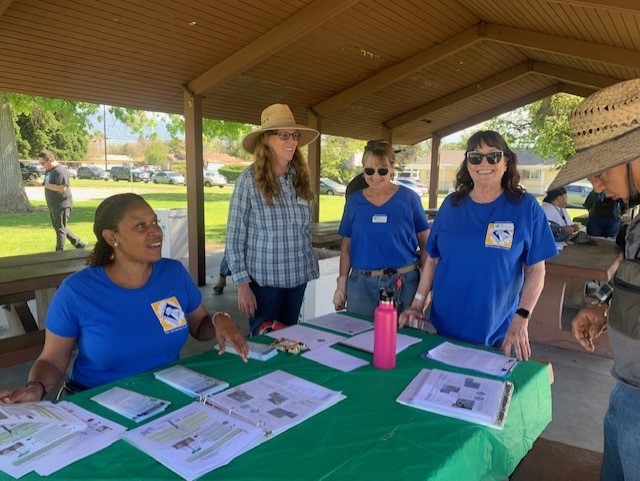Posts Tagged: UC ANR
Join UC ANR Moves at 1:15 p.m. on May 1
Join the UC ANR Moves event on Wednesday, May 1, from 1:15 to 2 p.m. UC ANR Moves promotes health and well-being by encouraging all employees to take a walk or engage in another physical activity for 30 to 40 minutes This annual event is intended to promote a thriving culture of health and well-being throughout UC ANR's work environment.
At 1:15 p.m., Scott Brayton, Staff Assembly chair, will kick off the event with a stretch session. Join him by Zoom:
Zoom https://ucanr.zoom.us/j/98754220328?pwd=b0tML3czSDdKd3U4ZUQzVzBXMGRBdz09
Meeting ID: 987 5422 0328
Passcode: 793713
Make this event fun!
Wear your silliest t-shirt or organize with your colleagues to dress up according to a theme or make posters and spread some love in the community. Either way, wear sun protection and take lots of photos and some videos!
Employees at the UC ANR Building in Davis will meet on the back patio by the breakroom.
- 1:15 -1:25 p.m. – Kick off: Scott Brayton, Staff Assembly Council chair, will kick us off with a rally and stretch.
- 1:25 to 2 p.m. – Walk at your location. Bring a bottle of water or hydrate well before the walk.
Please upload your mp4 videos and photos of your UC ANR Moves activities to the Box folder “UC ANR Moves” by May 8. Ethan Ireland will compile them into a single video, which we will show at the ANR town hall.
Hope to walk with you!
Jodi Azulai, on behalf of the Staff Assembly Wellness Committee
Scott Brayton, Emma Tribble, Suzanne Burton, Tatiana Avoce, Andrea Rayray, Lucie Cahierre, and Nora Lopez
1,800 Climate-Ready Trees Provided to Residents of Low Shade Neighborhoods
To date, over 1,800 climate-ready shade trees and tips on their planting and long-term care have been provided by UC Master Gardeners and over 20 partners to residents of low shade neighborhoods in San Bernardino and Riverside Counties through the “Trees for Tomorrow Start Today” project. Tree species given away are identified from research projects including the joint University of California/United States Forest Service (USFS) study at UC Riverside as well as from other research, local observations, and input from the green industry and academic colleagues.
The "Trees for Tomorrow Start Today" project was implemented in 2019 by Area UC Cooperative Extension Horticulture Advisor Janet Hartin with support from the Inland Empire Resource Conservation District. A "train the trainer" model provided education to Master Gardener volunteers from San Bernardino County on project elements and follow-up. Master Gardeners now manage many of the events. In 2023, the program expanded into Riverside County. Several other Master Gardener programs throughout the state have also expressed interest in implementing the "Trees for Tomorrow Start Today" project.
Why is this project so important? 95% of Californians now reside in cities and suburban environments. Resulting urban heat islands created by built environments coupled with impacts of climate change can be mitigated through nature-based solutions. Planting climate-ready shade trees now will help ensure cooler urban areas in the next several decades as trees mature and maximize their urban ecosystem benefits. Fortunately, the shade from a single well-placed tree can decrease surface temperatures of black asphalt and artificial turf by more than 70 degrees F in hot inland and desert cities. Studies show that surrounding air temperatures can also be reduced through the transpiration process.
A major goal of the"Trees for Tomorrow Start Today" project is to enhance tree canopy cover in low shade neighborhoods also plagued with much higher than average levels of air pollution and pulmonary and cardiovascular disease incidence. Events over the past month have occurred in Fontana, San Bernardino, and the Salton Sea.
Other partners include San Bernardino County, City of San Bernardino, California Climate Action Fellows, Tree People, Coachella Valley Resource Conservation District, Alianza Coachella Valley, Inland Empire Urban Conservation Corps, several water districts, and other groups.
Thank you to all our partners and, especially, our tree recipients, for greening and cooling your yard and neighborhood!
2023: These Are a Few of My Favorite Things
There's no fame, fortune or glory in writing a daily (volunteer) Bug Squad blog. It's about the insects. It's always been about the insects, from honey bees to bumble bees, to butterflies, to dragonflies, to praying mantises and more. Why? Just...
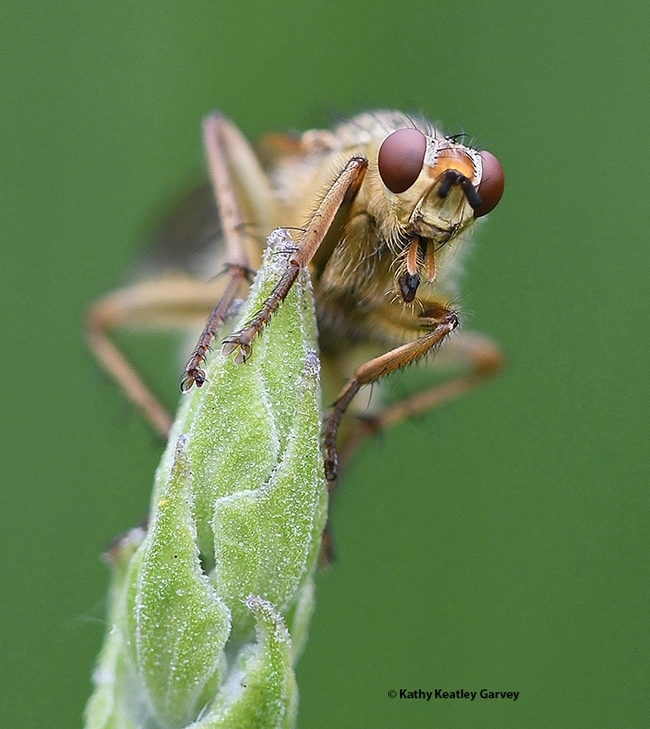
A golden dung fly, Scathophaga stercoraria, peers at the photographer. (Photo by Kathy Keatley Garvey)
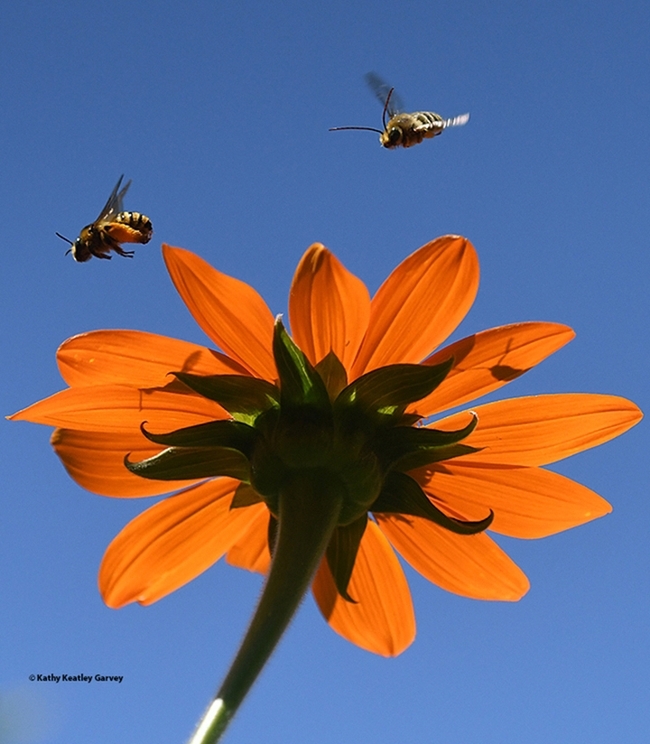
Two native bees, Melissodes agilis, buzz over a Mexican sunflower, Tithonia rotundifola. (Photo by Kathy Keatley Garvey)
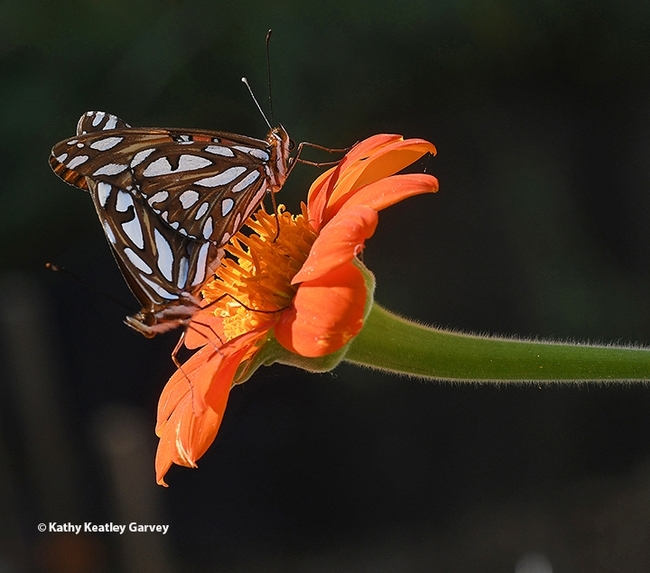
Two Gulf Fritillaries, Agraulis vanillae, keeping busy. (Photo by Kathy Keatley Garvey)
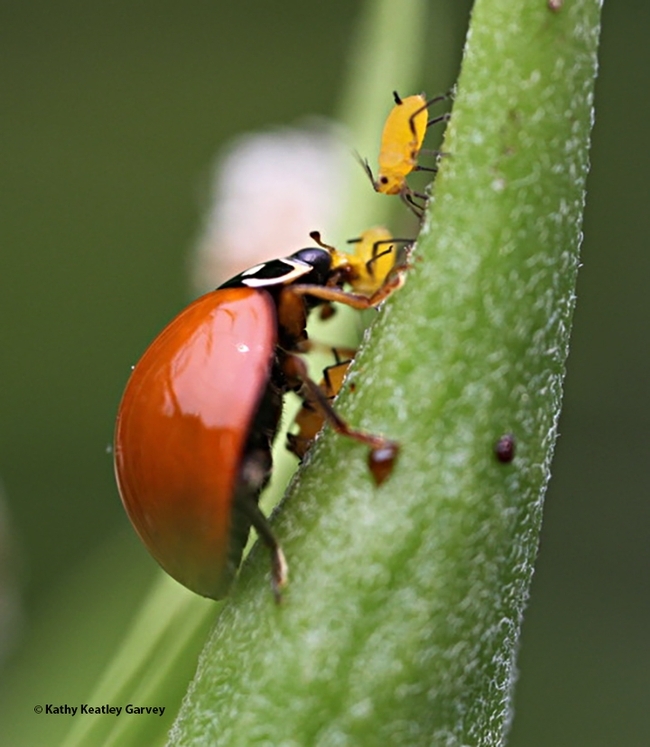
A lady beetle, aka lady bug, devouring aphids. (Photo by Kathy Keatley Garvey)
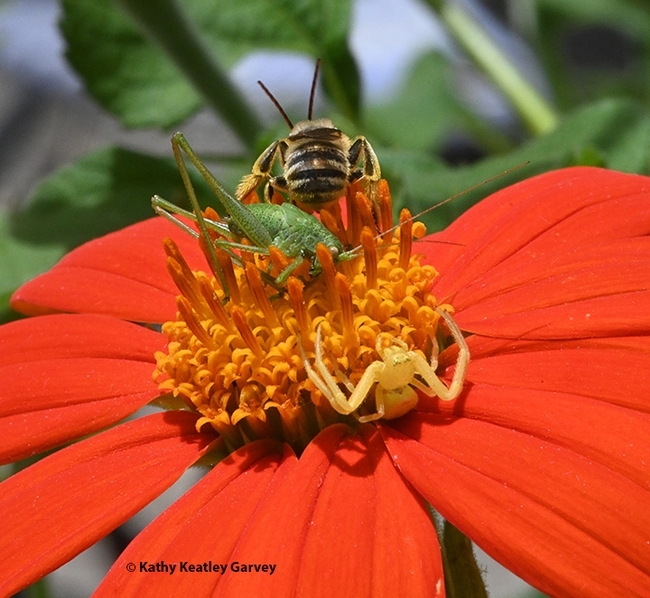
Three in one: a crab spider, katydid and a native bee. (Photo by Kathy Keatley Garvey)
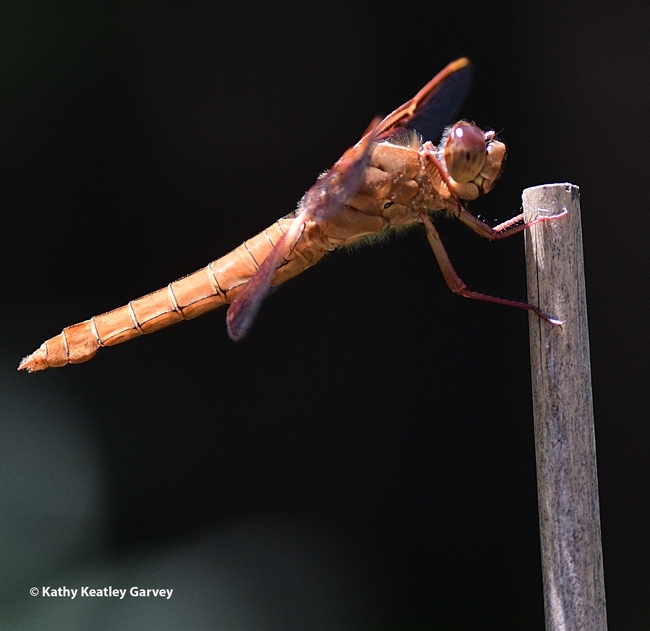
A flameskimmer dragonfly, Libellula saturata, looking or prey. (Photo by Kathy Keatley Garvey)
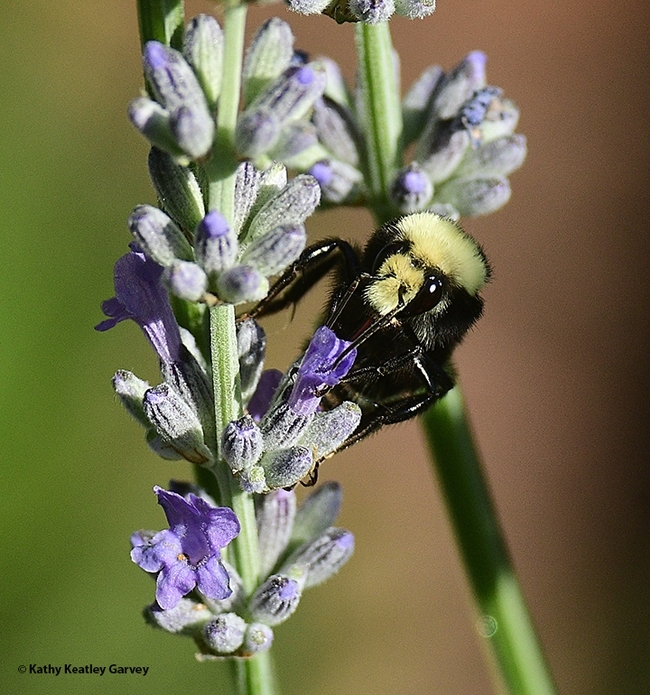
A yellow-faced bumble bee, Bombus vosnesenskii, gathering nectar. (Photo by Kathy Keatley Garvey)
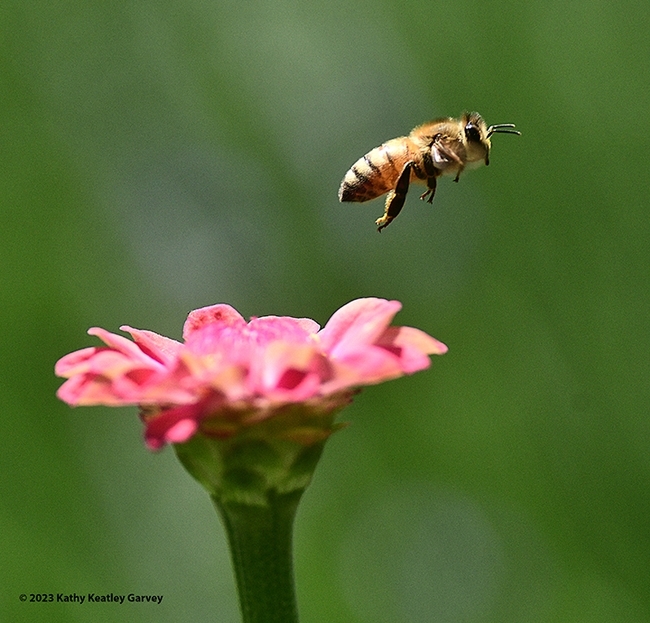
A honey bee, Apis mellifera, in flight over a Mexican sunflower, Tithonia rotundifola. (Photo by Kathy Keatley Garvey)
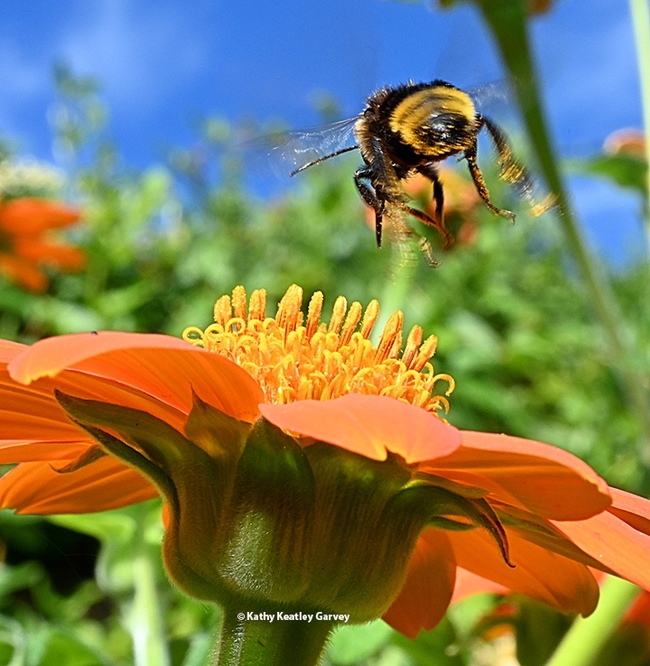
A bumble bee, Bombus californicus, leaving a Mexican sunflower, Tithonia rotundiola. (Photo by Kathy Keatley Garvey)
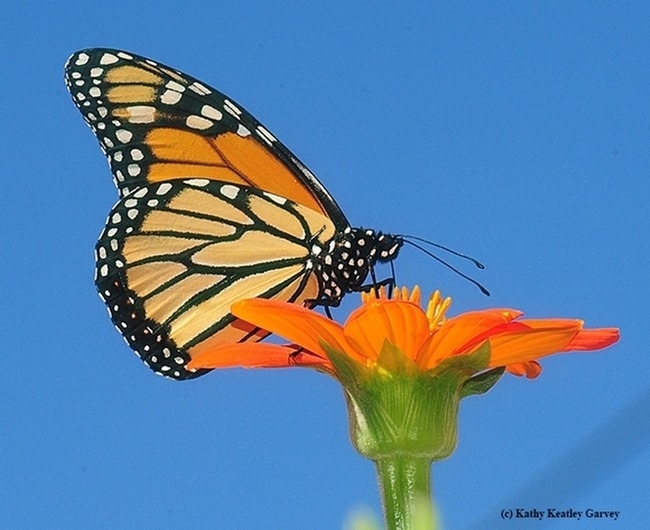
A monarch butterfly, Danaus plexippus, nectaring on Mexican sunflower, Tithonia rotundifola. (Photo by Kathy Keatley Garvey)
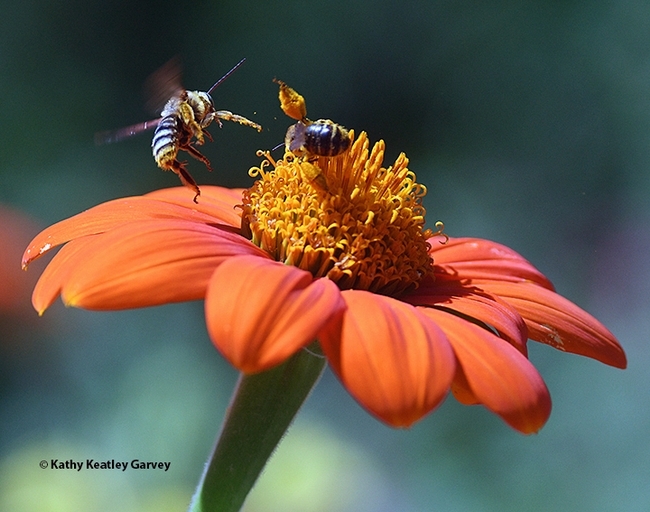
Native bees, Melissodes agilis, clash over territory. (Photo by Kathy Keatley Garvey)
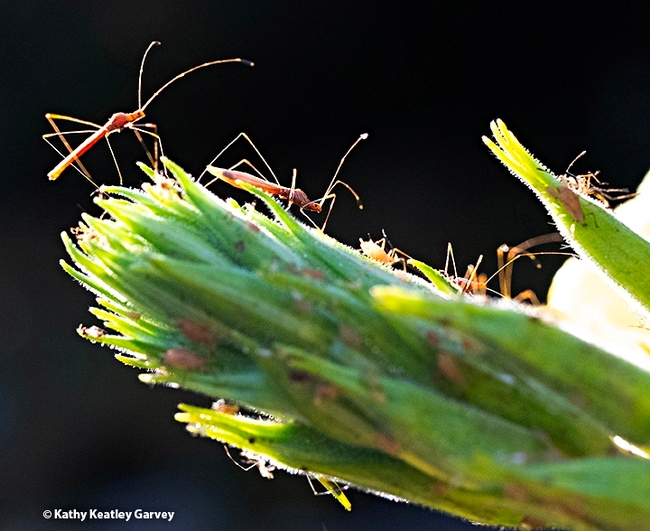
Stilt bugs, family Berytidae, order Hemiptera, infest an evening primrose. (Photo by Kathy Keatley Garvey)
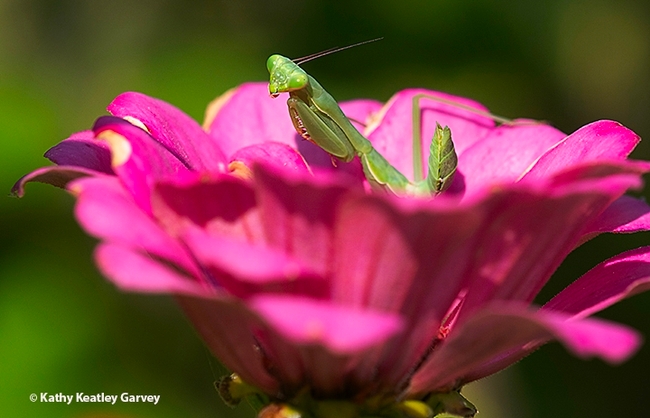
Pretty in pink? A praying mantis, Stagmomantis limbata, sits in a zinnia. (Photo by Kathy Keatley Garvey)
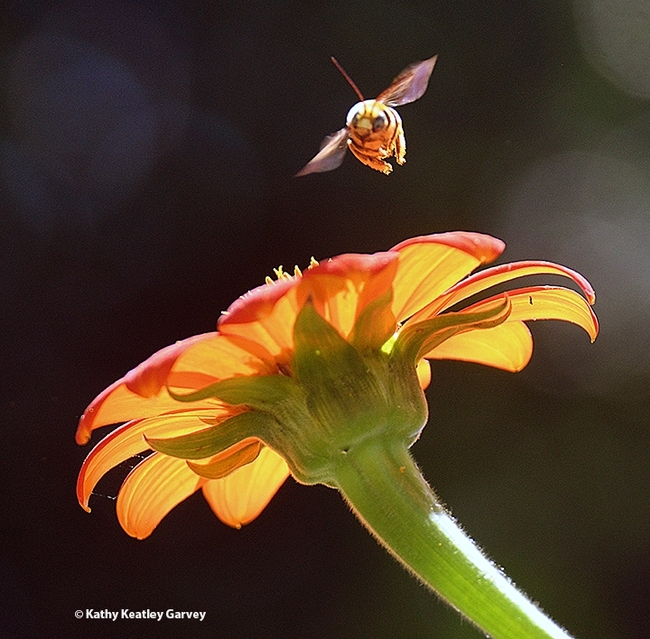
A territorial male native bee, Melissodes agilis, sails over Tithonia rotundifola. (Photo by Kathy Keatley Garvey)
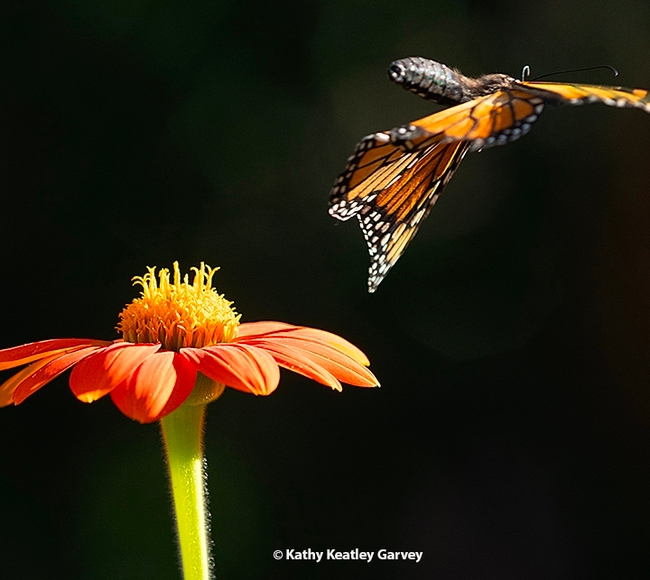
A monarch butterfly, Danaus plexippus, takes flight. (Photo by Kathy Keatley Garvey)
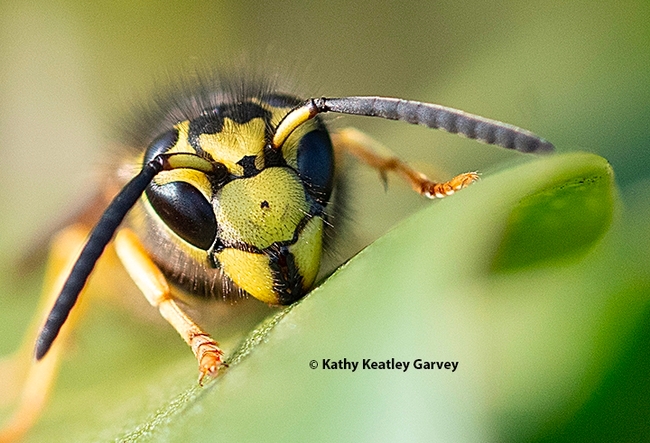
A Western yellowjacket, Vespula pensylvanica, stares at the photographer. (Photo by Kathy Keatley Garvey)
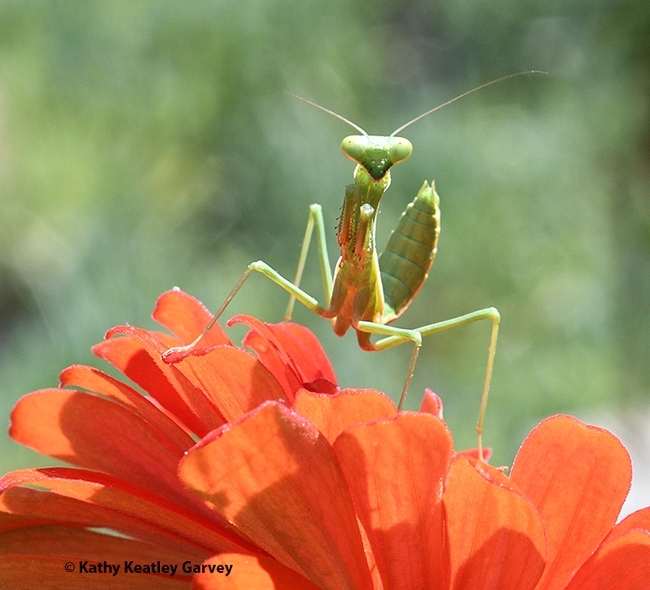
A praying mantis, Stagmomantis limbata, eyes the photographer. (Photo by Kathy Keatley Garvey)
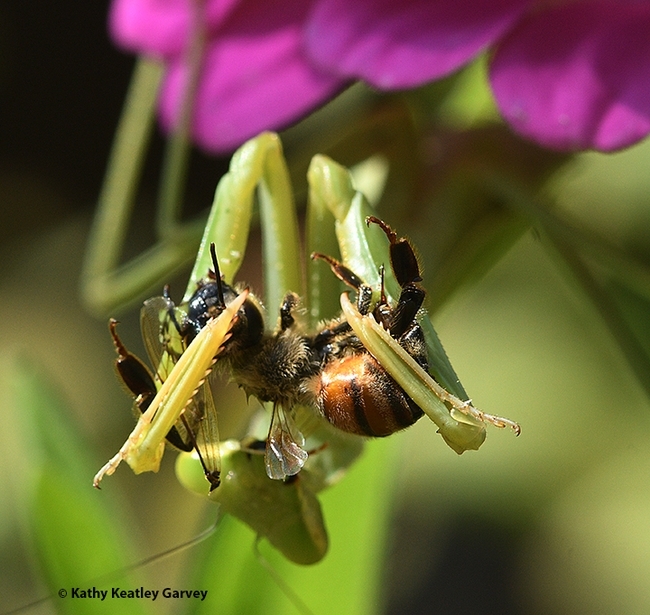
A praying mantis, Stagmomantis limbata, eating a honey bee, Apis mellifera. Everything alive must eat to stay alive. (Photo by Kathy Keatley Garvey)
UC ANR Data Center cutover changed to Dec. 9
Based on feedback from various stakeholders regarding our Data Center move cutover activities, ANR leaders have approved adjusting the start time to accommodate critical deadlines. Originally scheduled for Friday, Dec 8, at 5 p.m., the new start time is now set for Saturday, Dec 9, at 6 a.m.
The new cutover schedule is from Saturday, Dec 9, from 6 a.m. to Monday, Dec 11, concluding at 7 p.m.
Various web-based services, such as UC ANR websites, UC ANR Portal, VMS, and the survey tool, will be unavailable during the cutover. However, hosted separately, Outlook email, Zoom, and project board will operate without interruption.
The IT team will provide regular updates on the progress via email throughout the cutover.
Your support and understanding are crucial during this project. If you have any concerns, we encourage you to reach us at ucanrit@ucanr.edu
Regards,
Sree Mada
Chief Information Officer
Valliere brings expertise in restoration ecology
It all started with pumpkin seeds Justin Valliere has been hired to expand the Department of Plant Sciences' reach in the fields of invasion and restoration ecology. Valliere started as an assistant professor of UC Cooperative Extension in...

